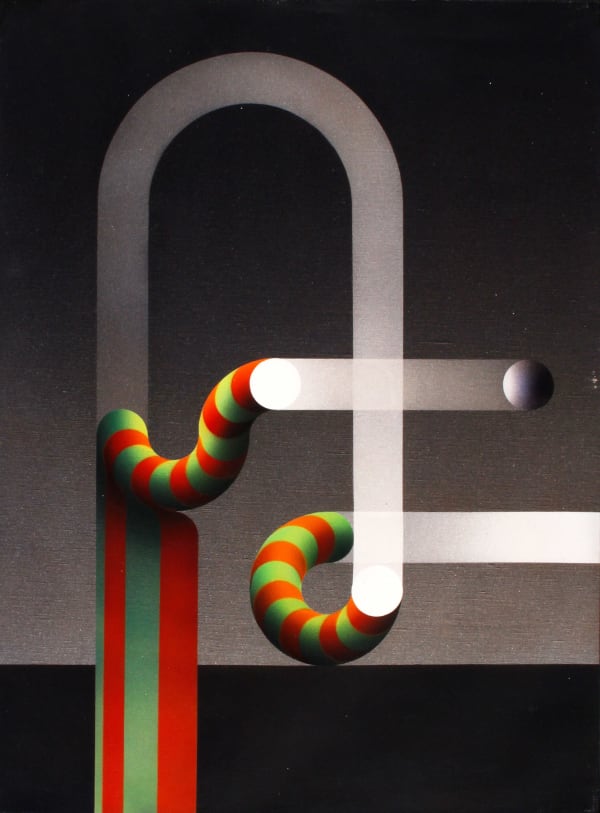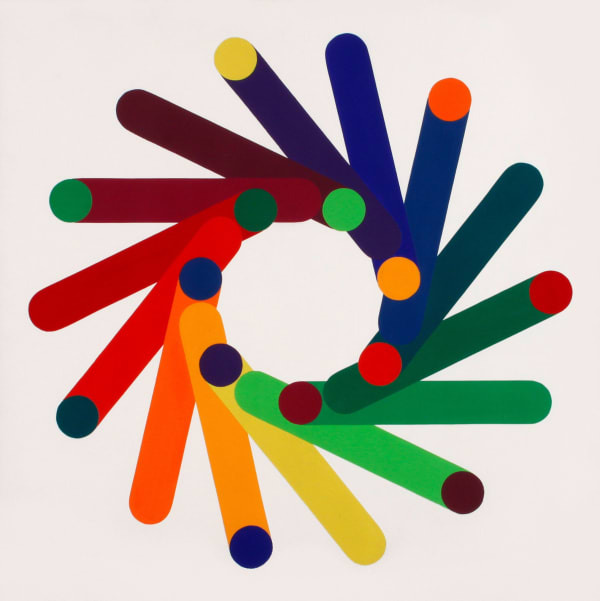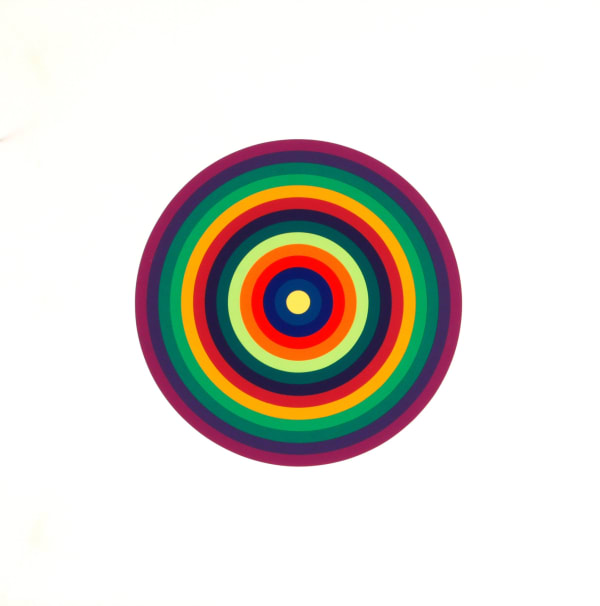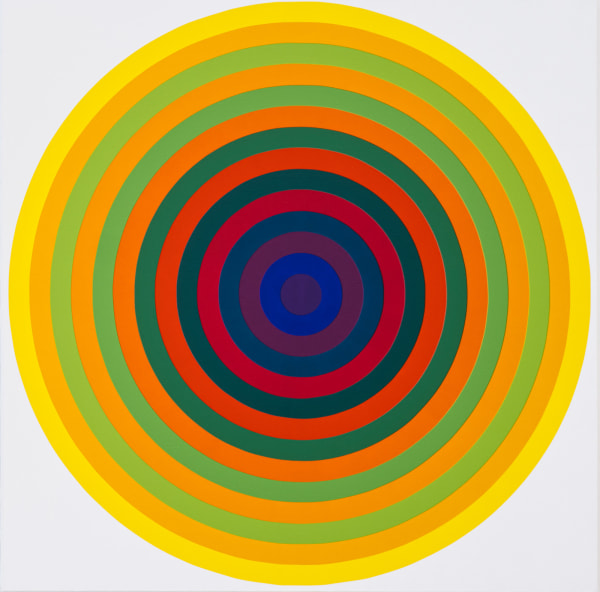Julio Le Parc
Upon moving to France and there becoming acquainted with other young, like-minded artists such as François Morellet, Horacio Garcia Rossi and Francisco Sobrino, Julio Le Parc co-founded the Groupe de Recherche d'Art Visuel (Visual Art Research Group, 1960–68). This was an artist collective which aimed to make art more accessible and politically relevant, shifting the focus from the solitary artist to the public and moreover, conceiving the public as co-creators of the work. Using industrial, mechanical, and kinetic techniques alike, Le Parc and his peers were sociopolitically invested in generating unmediated encounters between the art object and viewer: staging engaging, dynamic and playful art experiences in the public space of 1960’s Paris.
Central to Julio Le Parc's work has always been the concern for how art might stimulate the active participation of the public. Nothing is to hinder the viewer from experiencing the power of his artworks; no art historical references, symbolism or other kind of previous knowledge necessary. Influenced early on by the constructivist movement known as Arte Concreto Invención, as well as artists such as Piet Mondrian and Victor Vasarely, Le Parc’s quest for accessibility is directly linked to his experimentations on geometric abstraction, optokinetic forms and perception. Experiments whereby he manipulates chromatic color palettes, negative space and the interplay of light and shadow - creating compositions that combine a distinct intensity with a subtle expression of continuous movement.
Though Julio Le Parc’s diverse practice spans painting, sculpture, reliefs, immersive installations, kinetic constructions such as mobiles and even virtual reality works – a similar application of rigorous organizing principles can be found in his works, creating seemingly endless variations and repetitions of colour and form.
Julio Le Parc (b. 1928 in Mendoza, Argentina) attended the Academy of Fine Arts in Buenos Aires before moving to Paris in 1958, where he still resides and works. Le Parc represented Argentina at the 1966 Venice Biennale and was there awarded the Grand International Prize for Painting. He has been the subject of two prior solo exhibitions in Sweden: at the Moderna Museet Stockholm in 1969 and at Bildmuseet - Umeå University, Umeå in 2015.
Le Parc is widely exhibited around the world. His latest solo and group exhibitions include Centre d’Art Contemporain de la Matmut, Rouen, France (2021); Maison Hermès, Tokyo (2021); Virtual Contemporary, Istanbul (2021); Tabakalera, San Sebastián, Spain (2020); Musée d'Art Moderne et d'Art Contemporain (MAMAC), Nice (2019); Palais de Tokyo, Paris (2019).
Julio Le Parc is likewise represented in some of the world’s leading modern and contemporary art collections, such as Museo de Arte Moderno de Buenos Aires; Museo de Arte Contemporáneo de Buenos Aires (MACBA); Museu de Arte Moderna do Rio de Janeiro; Musée d’Art Contemporain, Montréal; Louisiana Museum of Modern Art, Humlebaek, Denmark; Museo Nacional Centro de Arte Reina Sofia, Madrid; Albright-Knox Art Gallery, Buffalo, USA; New Orleans Museum of Art, New Orleans; The Museum of Modern Art, New York; Musée d’Art Moderne de la Ville de Paris, Paris; Musée National d’Art Moderne Georges Pompidou, Paris; Museum Boijmans Van Beuningen, Rotterdam, the Netherlands; Tate Gallery, London; Daros Latinamerica, Zurich.
In September 2022, Le Livre Art Publishing released Julio Le Parc, the most comprehensive monograph to date on the artist.
Here is an interview with Julio Le Parc from his exhibition Julio Le Parc 1959 at The Met Breuer in 2018-2019.
-
 Ondes 166, 2023
Ondes 166, 2023 -
 Alchimie 515, 2023
Alchimie 515, 2023 -
 Ondes 169, 2023
Ondes 169, 2023 -
 Variante Serie 16 n°1, 2023
Variante Serie 16 n°1, 2023 -
 Série 15 No.1 Carré, 2022
Série 15 No.1 Carré, 2022 -
 Série 15 No.1 et 8 Pyramide, 2022
Série 15 No.1 et 8 Pyramide, 2022 -
 Série 15 No.1 et 8, 2022
Série 15 No.1 et 8, 2022 -
 Série 15 No.1 Losange, 2022
Série 15 No.1 Losange, 2022 -
 Alchimie 489, 2021
Alchimie 489, 2021 -
 Permutation de la Longue Marche no.1, 2020
Permutation de la Longue Marche no.1, 2020 -
 Modulation 966, 1987
Modulation 966, 1987 -
 Modulation 965, 1987
Modulation 965, 1987 -
 Volume Virtuel 47, 1974
Volume Virtuel 47, 1974 -
 Ondes 142 no.8, 1974
Ondes 142 no.8, 1974 -
 Volume Virtuel 26, 1974
Volume Virtuel 26, 1974 -
 Volume Virtuel 21, 1974
Volume Virtuel 21, 1974 -
 Ondes 150, 1974
Ondes 150, 1974 -
 Volume Virtuel 17, 1974
Volume Virtuel 17, 1974 -
 Ondes 156 no.8, 1972
Ondes 156 no.8, 1972 -
 Ondes 106B no.12, 1972
Ondes 106B no.12, 1972 -
 Série 18 no.1, 1971
Série 18 no.1, 1971 -
 Série 15 no.8, 1970-2019
Série 15 no.8, 1970-2019
-

Julio Le Parc: Gallerierna höstöppnar med humor och färg
Clemens Poellinger, Svenska Dagbladet, August 27, 2022 -

Julio Le Parc: Stark säsongsstart på Stockholms gallerier
Birgitta Rubin, Dagens Nyheter, August 24, 2022 -

Julio Le Parc: Behind Argentinian artist Julio Le Parc’s fascinating modern Op Art and Kinetic Art installations
Michelle Lee, Home & Decor, January 16, 2020 -

Julio Le Parc: Julio Le Parc's Brilliant Op Art Beginnings
Zachary Small, Hyperallergic, January 28, 2019 -

Julio Le Parc: At 90, This Artist Is Still Opening Doors of Perception
Holland Cotter, The New York Times, January 24, 2019 -

Julio Le Parc: Julio Le Parc at Instituto Tomie Ohtake and Nara Roesler
Tobi Maier, Frieze, January 19, 2018 -

Julio Le Parc: Form into Action, Pérez Art Museum, Miami — review
Edwin Heathcote, Financial Times, December 2, 2016 -

Julio Le Parc: Discover the Spellbinding Art of Julio Le Parc in New York and Miami
Kristiano Ang, Architectural Digest, November 15, 2016 -

Julio Le Parc: Peripheral Visions
Robert Barry, Frieze, September 7, 2013 -

Julio Le Parc: Julio Le Parc at Palais de Tokyo
Mara Hoberman, Artforum, February 28, 2013
-

Julio Le Parc at Atkinson Museum, Vila Nova de Gaia, Portugal
Group-exhibition 4 Jul - 30 Sep 2023During the 1950s and 1960s, many artists started to bring ideas from mathematics, scientific research and colour theory into their work, and some began using...Read more -
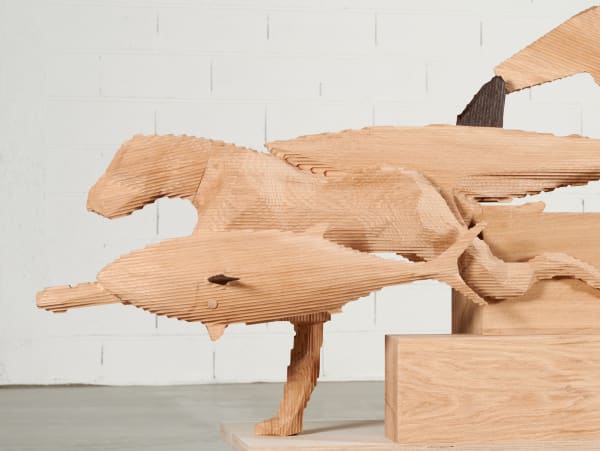
Andréhn-Schiptjenko at Art Basel 2023
Art fair 15 - 18 Jun 2023Andréhn-Schiptjenko is delighted to participate to this year’s edition of Art Basel. We hope to see you in Hall 2.1, Booth R15 where we will...Read more -
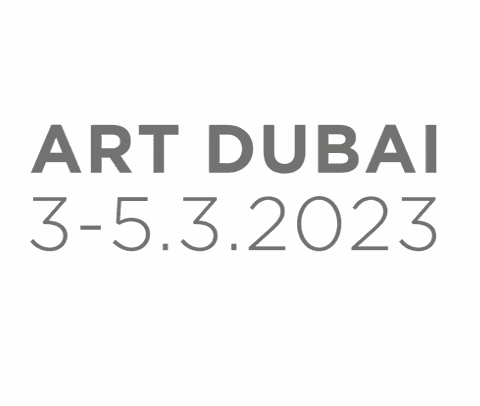
Andréhn-Schiptjenko at Art Dubai 2023
Art Fair 1 - 5 Mar 2023Andréhn-Schiptjenko at Art Dubai 2023 Madinat Jumeirah Conference & Events Centre Arena Hall - Booth C3 March 1-5 We are delighted to announce our participation...Read more -
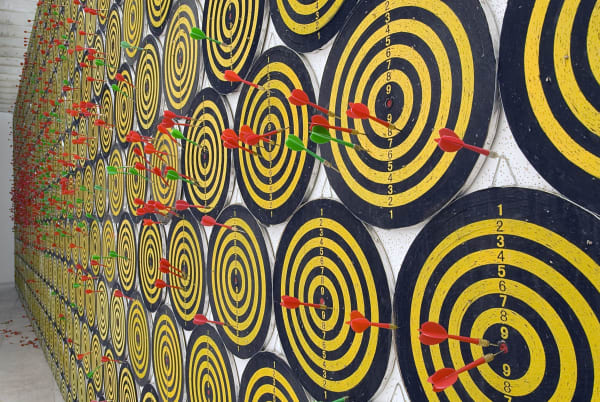
Jacob Dahlgren and Julio Le Parc at Le Centquatre, Paris, France
Group-exhibition 17 Sep 2022 - 29 Jan 2023Conçue pour attirer, créer du désir et de la folie par le biais de l’art contemporain, l’exposition Foire Foraine d’Art Contemporain transforme le Centquatre-Paris en...Read more
-

Andréhn-Schiptjenko at Art Basel 2023
Art fair 15 - 18 Jun 2023Andréhn-Schiptjenko is delighted to participate to this year’s edition of Art Basel. We hope to see you in Hall 2.1, Booth R15 where we will...Read more -

Andréhn-Schiptjenko at Art Dubai 2023
Art Fair 1 - 5 Mar 2023Andréhn-Schiptjenko at Art Dubai 2023 Madinat Jumeirah Conference & Events Centre Arena Hall - Booth C3 March 1-5 We are delighted to announce our participation...Read more













